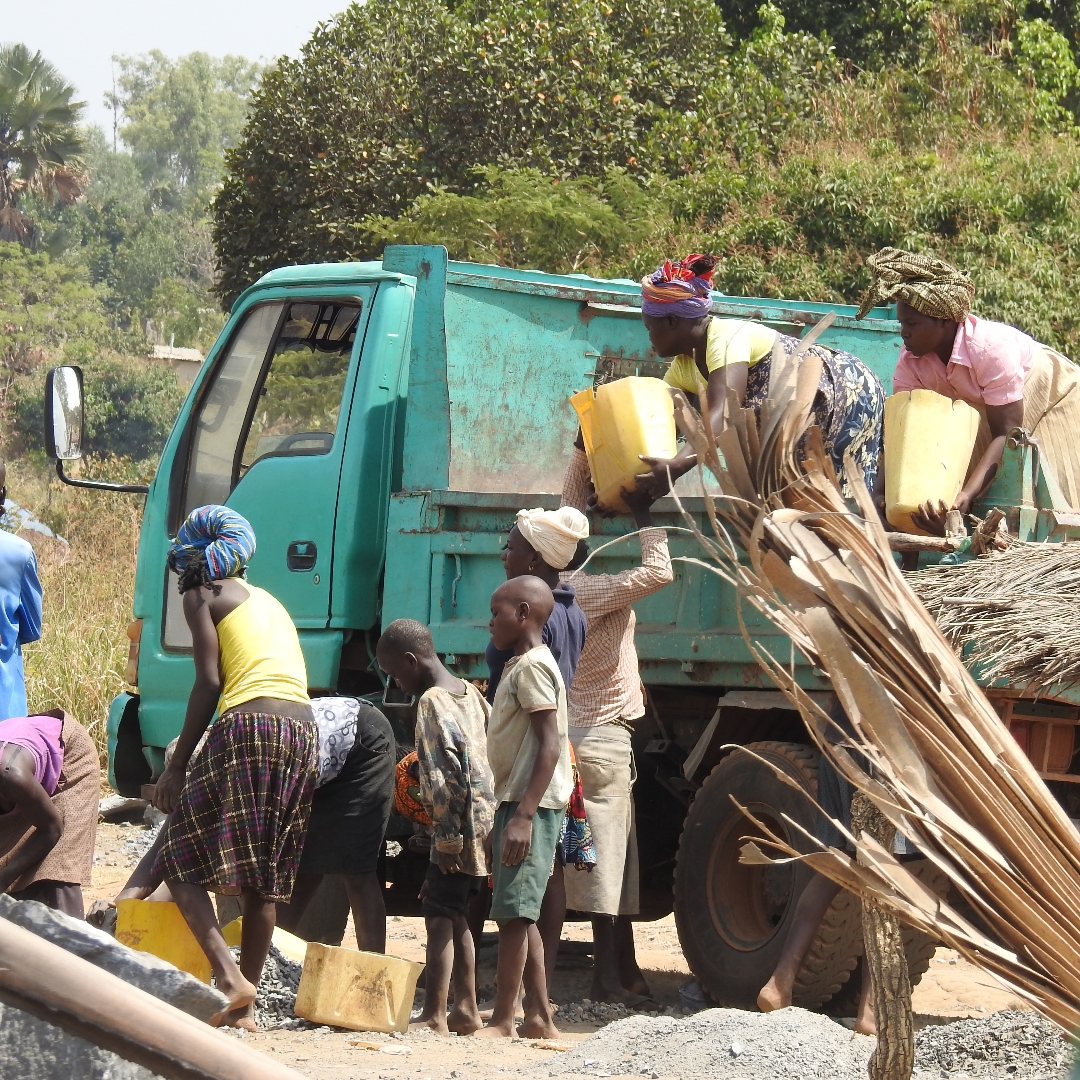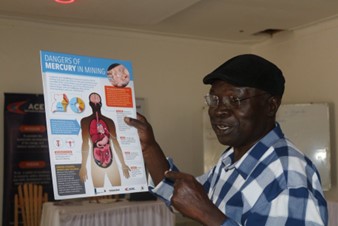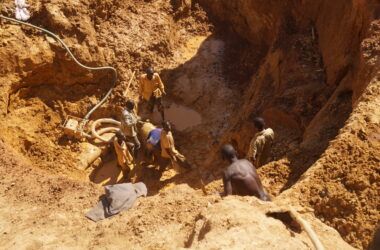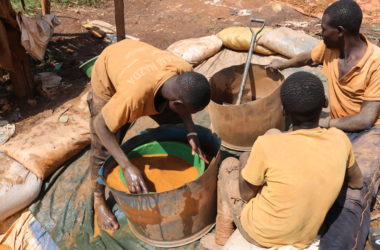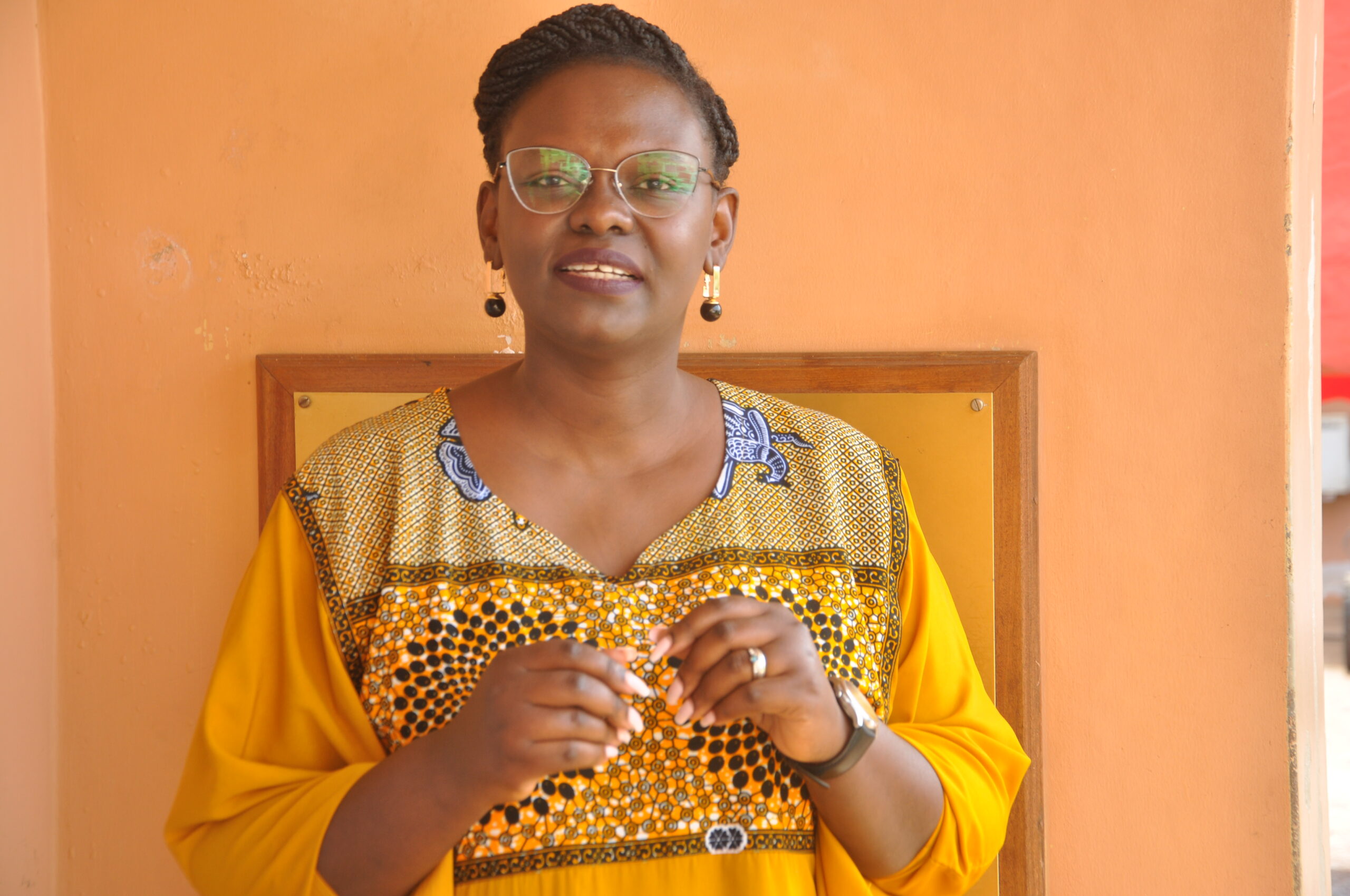It is midday at the Laroo stone quarry about 5Km from Gulu town. Hundreds of locals robotically pound away at rocks using small hammers. The huge rocks have to be manually broken into smaller pieces and graded according to what the market demands. Their voices compete with the loud consistent pounding, while dust engulfs the air. Small mounds of stone for each miner occupy the site while they crash the stones briskly. Women are noticeably more in number.
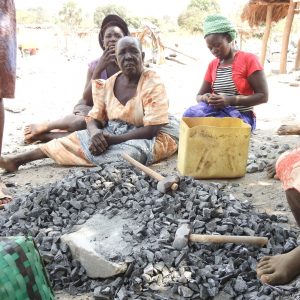 Seated under the scorching sun, a sweaty Lakot, about five months pregnant, curtly looks up at the intruders and carries on with her work nonchalantly. However, after a few introductions, occasionally interrupted by the deafening sound of hammers crushing stones, she opens up.
Seated under the scorching sun, a sweaty Lakot, about five months pregnant, curtly looks up at the intruders and carries on with her work nonchalantly. However, after a few introductions, occasionally interrupted by the deafening sound of hammers crushing stones, she opens up.
Lakot lives with her husband who is a farmer, and the quarries have helped support the family, especially during the dry season when her husband does not bring much after a day’s work. Within five years of working in the quarries, Lakot Night Oneka has been able to educate three children in primary school as well as pay their medical bills while providing them with all other basic needs. She shares that this makes all the difference, as opposed to being a housewife which was her position before a friend introduced her to the quarries. “I make much more than my husband, and that is why even in my (pregnant) state, I persist.”
Quarrying in Northern Uganda has existed since the late ‘80s. However, it became popular in the late ‘90s and early 2000s during the insurgency as Ugandan forces battled the Lord’s Resistance Army (LRA) rebels in the region. The insecurity could not allow locals to engage in agriculture and hence many of them resorted to quarrying. They stuck there after the war, with business picking up as government sought to reconstruct northern Uganda.
This particular quarry hosts about 1000 miners. The pits in which stones are extracted are about 18 feet deep and 30 metres wide. Miners use hand-held hammers and pick axes to break the rock and sometimes employ the use of heat using firewood to make rocks easier to crack. The rocks are then assembled into cut jerry cans that are later transported manually, one heads or shoulders, to the site where they are crashed. The final product is then taken to the main market, Laroo Wigot market, where they are sold. There are other equally busy mines in close proximity to Gulu town like Badege and Kidere , but Laroo is by far the biggest.
A lucrative trade
Quarrying is no doubt a modestly lucrative venture for the locals here. 36 year old Ayo Everlyn from Badege quarries has spent over ten years working in the quarry. She says she has managed to construct a permanent house from her income. “We sell a truck between 200,000 and 280,0000 shillings,” she says. “It can take us about two days to fill a truck especially if our children are on holiday to help us.”
Munganita Sylvia, a widow from neighbouring Packwach district moved to Gulu to work in the quarries. She says that quarrying has enabled her to educate her children who are attending a secondary school in Iganga District. The women’s high regard for education is quite evident.
“We want our children to study and have a better future. This work helps us buy bicycles for them so that they do not have to walk to school,” said Margaret Anera, the Chairperson for Kidere Quarries.
Quarrying has also been vital in helping the women afford medical care. Florence Akello injured her back while transporting the stones, and was able to buy a medical belt to help her cope.
Not all rosy
Working in the quarries however presents multitudes of challenges especially for the women. The working conditions there are quite difficult. Ading Jenifer, an elderly woman suffers chest pain as a result of carrying heavy loads over several hundred metres from the pit to the crushing area. Another woman explains that carrying the heavy stones on their heads “changes the shape of the head, causing a painful depression of some sort.”
They work without any protective gear like gloves which leaves their hands sore. Jenifer Adokorach, a middle aged woman, wittily says handshakes are almost impossible as their cracked palms can ‘injure’ a person. Accidents are also inevitable in these quarries.
There are frequent cases of violence against women. Some husbands usually seek to claim rights over the women’s proceeds from the quarry and beat them when they resist. Ochete, a male miner impishly states, “These women become big headed when they start making money. They disrespect their husbands just because they are making more money.”
High transportation costs, from the quarries to the market stands out as a major challenge. “We pay about 150,000 shillings just for the stones to reach the market, and yet, we are selling at 250,000 shillings. If you are to include labour costs, that leaves you with a profit of about 50,000 shillings only which is little money compared to the amount of hard work we put in,” Akello Evelyn states.
Stone quarrying in Northern Uganda has given a livelihood to many locals for a long time across the different stages of the values chain; from the extractors, to transporters, middle men, construction companies and others. Ochete Solomon, says he has managed to buy 3 acres of land in Nwoya district out of profits made from the quarries. Abwoli Nelson also bought two motorcycles out of quarrying.
According to the UNDP 2018 Baseline Assessment of Development Minerals, the Ugandan construction sector, which is experiencing annual growth of 6%, demands multiple building minerals including sand, clay, limestone, marble, kaolin and sources of stone aggregate. What is more, the sector is also a huge contributor to employment, with artisanal and small-scale mining (ASM) alone having an estimated 390,000 strong workforce country-wide. If ASM Development Minerals, which amount to an estimated $350 million USD per annum, were integrated within official statistics, the GDP would increase by 1.4%. Based on average household consumption patterns in Uganda, miners contribute an estimated $9.9 million USD per annum to VAT (equating to almost 2% of VAT collected in 2016).
Critical attention therefore should be paid to the Development Minerals as they impact more on the country’s GDP compared to other minerals.

